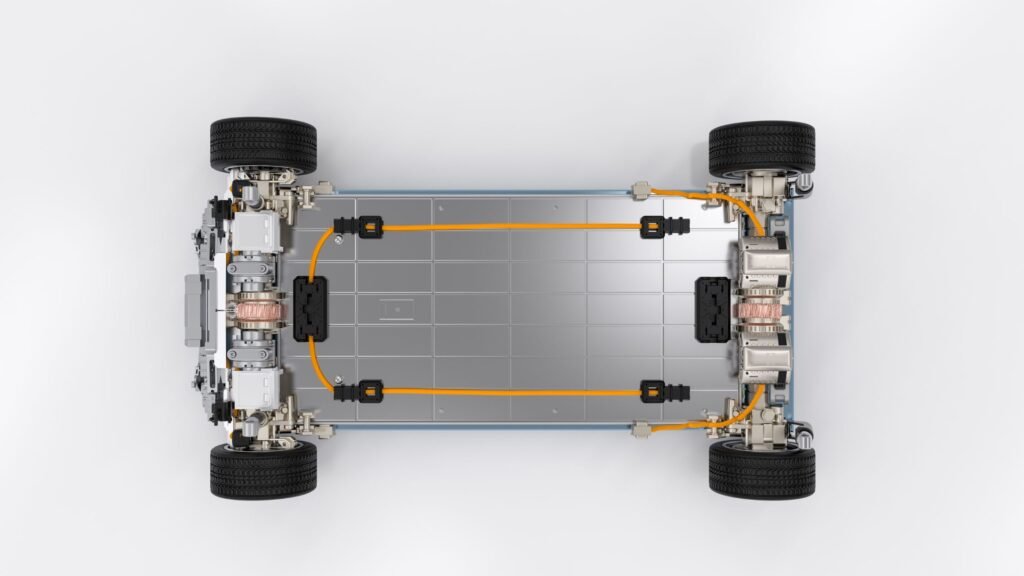Hybrid car batteries stand at the lead of automotive innovation integration efficiency with environmental consciousness. In this article, we unravel the complexities of these powerhouses revealing how they function and the challenges they bring. Dive into the world of hybrid car batteries with us, and discover what sets them apart in our journey towards sustainable transportation.
- What Is a Hybrid Car Battery?
- Working of hybrid car batteries
- Benefits of hybrid car batteries
- Short life span
- Expensive maintenance
- Future of hybrid batteries
- Further Explorations in Hybrid Battery Technology and Care
- What is the life span of hybrid battery?
- How can I replace my hybrid battery?
- What happens in case of hybrid car battery failure?
- If a hybrid battery dies can you still drive the car?
What Is a Hybrid Car Battery?
It is a combination of functions of a gas-powered motor and an electric hybrid battery. As it is rechargeable, it provides sufficient power to move a heavy or large vehicle.
Working of hybrid car batteries
It integrates the technology of electric automobiles with that of conventional cars. A hybrid car use both a 12 volt lead acid battery and gasoline similar to conventional vehicle, while also harnessing energy from an electric battery. The car can switch seamlessly between power sources so the driver isn’t aware of the move.

The electric battery undergoes recharging via a mechanism referred to as regenerative braking. The act of pressing on the brake pedal generates energy that replenishes the electric battery. The seamless transition between electric and gas propulsion is the fundamental factor behind the exceptional energy efficiency of hybrid vehicles. Hybrid vehicles operate on gasoline only for a portion of their operation, resulting in a fuel efficiency that is 20 to 35% higher than that of conventional vehicles. Additionally, it diminishes the vehicles emission, rendering a hybrid automobile more environmental friendly.
Hybrid batteries consist of two electrodes immersed in an electrolyte solution. The electrolytes are divided by a polymer film to prevent any short circuiting. The electrodes establish a connection with the gadget; specifically a hybrid vehicle is activated. It is important to mention that hybrid vehicle is a battery pack consisting of numerous cells that collaborate to provide a substantial change required to operate an automobile.
There is a positive electrode and a negative electrode in each cell of the battery. The positively charged electrodes send ions to the negative electrode. Positive ions accept the electrons from the negative electrode. This complicated process generates an electrical charge.
Examples of hybrid car batteries
The most frequent types of hybrid car batteries are Nickel-Metal Hydride (NiMH) batteries, Lithium-Ion (Li-Ion) batteries, and Lead-Acid batteries.
Benefits of hybrid car batteries
Eco friendly

A major benefit of an automobile equipped with a hybrid battery, as opposed to a gasoline powered car is its capacity to operate with reduced emissions and achieve superior fuel efficiency so promoting environment sustainability.
Economic benefits
Many subsidies and incentives make hybrid batteries cheap. They have lower annual tax expenditure and congestion charges
Drawbacks of hybrid car batteries
Short life span
It is major drawback of hybrid batteries. Most hybrid batteries have an eight year warranty, but some fail early.
Expensive maintenance
Due to short life span, a hybrid battery requires frequent replacements, which can be costly.
Future of hybrid batteries

The future of hybrid batteries is bright they offer reliability and flexibility in an electric vehicles-heavy society. They meet environment and practical needs. In future, the line between hybrids and fully electric vehicles may blur, creating a future where the difference is not about fuel type but proficient and environmental friendly transportation.
Further Explorations in Hybrid Battery Technology and Care
As we look toward the future of hybrid car batteries understanding their evolving technology and maintenance needs becomes increasingly important. For those interested in the practical aspects of battery care our article on Revive Your Ride: Dead Car Battery Tricks offers valuable insights into extending the life and efficiency of your vehicle’s battery.
Frequently Asked Questions about Hybrid Car Battery
What is the life span of hybrid battery?
Hybrid car batteries typically last 77,671 to 99,419 miles, but with proper care they can live longer. This should take 6-7 years for most.
How can I replace my hybrid battery?
Hybrid replacement batteries can be bought, but installation is not advised it is safest at the specialist workshop.
What happens in case of hybrid car battery failure?
When a hybrid car battery dies, the combustion engine may provide some power but not enough to fully charge it.
If a hybrid battery dies can you still drive the car?
No, you must replace it to drive.
Conclusion
As we navigate the evolving landscape of automotive technology, hybrid car battery emerge as a beacon of innovation and environmental stewardship. They not only signify a leap towards more efficient and eco-friendly transportation. But also highlight the challenges of adding advanced technologies in our daily lives. While they currently tie the gap between conventional fuel engines and fully electric vehicles the future promises even more advancements. Embracing these hybrid solutions paves the way for a greener more sustainable future. As we continue to explore and refine these technologies hybrid car batteries will undoubtedly play a pivotal role in shaping the next generation of transportation.
I am David seasoned content writer, excels in crafting engaging, SEO-optimized content across diverse industries, driving engagement and results.

2 thoughts on “Hybrid Car Battery Essentials: Impact & Innovation”